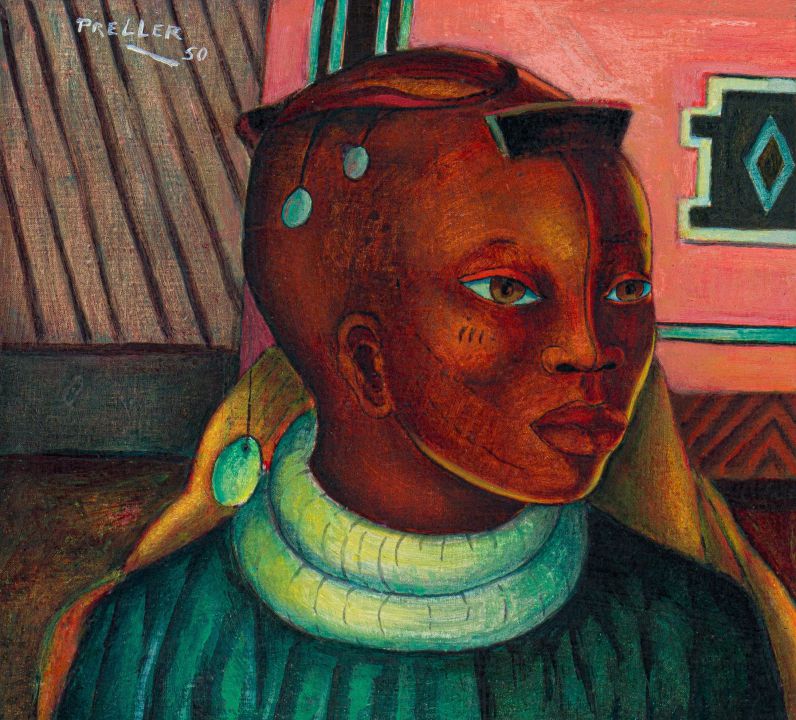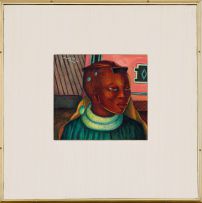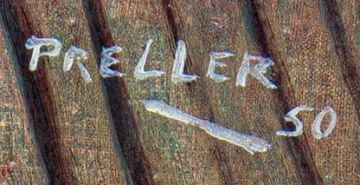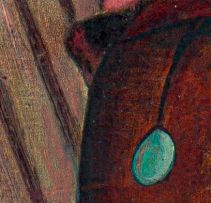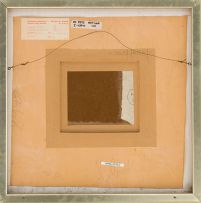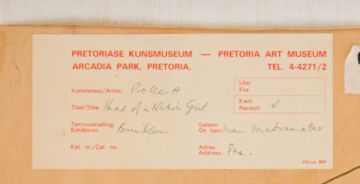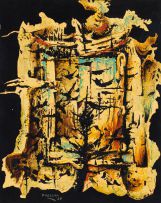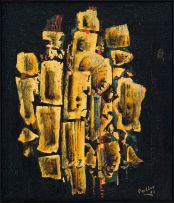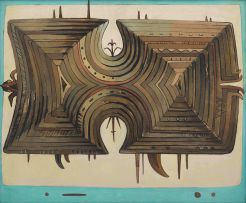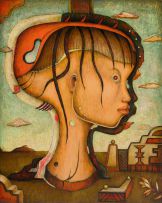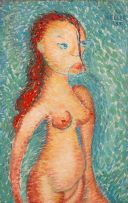Modern, Post-War and Contemporary Art and South African Fine Wine
Live Virtual Auction, 26 - 28 July 2020
Tuesday Evening Sale
Incl. Buyer's Premium & VAT
About this Item
signed and dated 50; inscribed with the artist's name and the title 'Head of a Native Girl' on a Pretoria Art Museum label adhered to the reverse
Notes
In a documentary made for broadcast on television by the SABC, Alexis Preller is described as 'a man who collected images' and he particularly searched for images in his everyday life, in his travels on the continent, and in books on art and mythology, that represented an idea of Africa, not so much as it is, or was, but as he imagined it to be.1 He was particularly interested in the costumes worn by the Ndebele women (or at that time more commonly known as 'Mapogga') who lived near Pretoria, and the colourful geometric murals they painted on the walls of their homesteads. Much of what is nowadays thought to be 'typical' Ndebele visual style and material culture is in fact of fairly recent origin, only developing in the 1940s in response to particular political, social and economic conditions prevailing at the time, rather than time-honoured traditional practices.2 3 Nevertheless, this represented for Preller a link to an arcane and mysterious Africa of the distant past that encompassed southern and central African cultures as well as Egyptian forms and archetypes.
In the present lot, Preller repeats a form that appears many times in his work. The same face appears in the various iterations of The Kraal, painted in the late 1940s and early 1950s, one of which is in the Iziko South African National Gallery. The heads appear in the close foreground in each of those works, severed at the neck by the lower margin of the picture plane. In the present lot the head and shoulders are visible and the woman's rolled and padded neck rings, characteristic of many southern African traditional dress styles, can be seen more clearly. Her facial scarification and mud-packed braided coiffure, although with some historical precedent in Luba and Makonde practices in central and east Africa, and possibly sourced in part from historical colonial ethnographic photographs Preller might have seen on one of his visits to the Trocadéro (now Musée de l'Homme) in Paris, are likely to be largely a product of his own imagination and sense of design.
1. Hancock Film Productions (1973-1976) 'The World of Alexis Preller', television production commissioned by the SABC, in collaboration with Edgar Bold, Esmé Berman and the Art Institute of South Africa.
2. Elizabeth Ann Schneider (1986) Paint, Pride and Politics: Aesthetic and Meaning in Transvaal Ndebele Wall Art. Unpublished PhD thesis, University of the Witwatersrand, Johannesburg, page 217.
3. Franco Frescura (1990) Accommodation or Protest? The Rise of a Wall-decorating Tradition in Rural South Africa, online, available at http://mobile.wiredspace.wits.ac.za/bitstream/handle/10539
